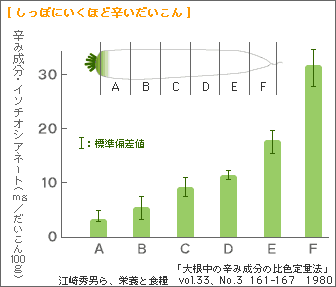- Notice
- Notice of Kansai Conference
Strike! Participating Schools Nearby! vol.6 Osaka Prefectural Sumiyoshi High School
2014.12.17
Hello!
This is Ishizawa from Liberace.
I recently visited Osaka Prefectural Sumiyoshi High School!
Sumiyoshi High School will be presenting two oral presentations (actually three since they will also be presenting posters), both in English.
Chemical Ecology of the Brassicaceae Plants ( Osaka Prefectural Sumiyoshi High School Science Club )
We were interested in isothiocyanate (ITC), a substance found in cruciferous plants, and studied the survival strategy of cruciferous plants based on the relationship between cruciferous plants and ITC. Experimental results showed that ITC concentrations increased immediately after germination, after infection by disease, and after feeding damage by natural enemies, and that a large amount of ITC was produced in seeds and flower buds, which are organs important for the survival of the species. In addition, it was found that larvae of the white-headed gull, the largest natural enemy of cruciferous plants, selectively feed on leaves with low ITC content. From these results, we conclude that cruciferous plants use ITC to repel natural enemies and protect themselves. In the future, we would like to study the entire ecosystem through ITC.
The color distinction experiment of jellyfish ( SS Science II Jellyfish Group, Osaka Prefectural Sumiyoshi High School )
We used and investigated "takokurage" about change of movement by light and a color. And change by them was able to be checked.
I was impressed that both started from a familiar and interesting point of view.
The Science Department's research focuses on radish as a cruciferous plant.
Surely the pungency varies depending on the individual and the part of the fish, right?
I'm developing my research based on the reasons for this and their relationship to natural enemies.
In fact, to see what kind of results ......... is getting, please listen to the presentations on the day of the event!
Incidentally, Kagome Co. posted this survey
<Quotes from Kagome Corporation's Vegetable Compendium
The other presentation by the jellyfish group challenges the question, "Can jellyfish distinguish colors?" The other presentation by the jellyfish group challenges the question, "Can jellyfish distinguish colors?
If they recognize colors, what are they for?
Although the number of data was still small, I was looking forward to future development around the original experimental system being set up!
After listening to the presentation, my biggest impression was, "Too much content is a waste of time!" I felt it was a waste of time.
We do a lot of experiments, so we have a lot of results available, and each one has its own interpretation: .........
I want to present it all! I understand the feeling.
However, the presentation time on the day is limited.
In this context, we need to convey the full appeal of our research, so
Once again, we should be aware of the following two points.
Focus on one point of communication
Show only the data necessary to make that point.
I hope everyone will take another look at their presentations!
In fact, we were shown one more research result, although we did not enter it in this issue.
I was washing hair extensions with various materials and examining them under an electron microscope in an effort to "find out what causes hair damage."
Some are as expected, like washing with Tabasco hurts, and after all, honey and olive oil are gentle on the hair.
Some of the materials seemed to have produced results that were outside of the norm.
I would love to see this one announced next year!
Summary of points
(11) Focus on one point to convey
(12) Show only the data necessary to make the point.

